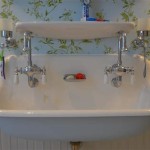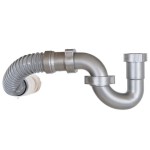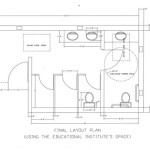How to Repair a Hole in Bathroom Wall Tile
A hole in your bathroom wall tile can be an eyesore and a source of frustration. Whether it's from a misplaced hammer blow, a rogue piece of furniture, or even a stubborn adhesive, repairing a hole in your bathroom tile is a task that can be tackled with the right tools and techniques. This article will guide you through the process of patching and restoring your bathroom wall tile, leaving it looking as good as new.
1. Assessing the Damage and Gathering Materials
The first step is to evaluate the extent of the damage and determine the best course of action. If the hole is small and the surrounding tile is intact, you can likely patch it using tile epoxy or a similar filler. However, if the hole is larger or the surrounding tile is cracked, you may need to replace the entire tile.
Once you have assessed the damage, gather the following materials:
- Tile epoxy or a similar patching compound
- Masking tape
- Sandpaper (various grits)
- A small putty knife or scraper
- A clean cloth
- A grout pen or grout sealer (if necessary)
- A small brush for applying grout sealer
- Safety goggles and gloves
2. Preparing the Hole for Repair
Before you begin patching the hole, it's important to ensure the surrounding area is clean and free of debris. Use a vacuum cleaner or a damp cloth to remove any dust or dirt. If the hole is caused by a broken tile, carefully remove any loose pieces of tile using a tile cutter or a hammer and chisel. Be sure to wear safety goggles during this process.
Once the hole is clear, use sandpaper to smooth out any rough edges. This will help the patching compound to adhere properly and ensure a seamless finish.
3. Patching the Hole
With the hole prepped, you can now begin to patch it using tile epoxy or a similar product. Read the manufacturer's instructions carefully before applying. Typically, you'll need to mix the epoxy according to the provided ratio and then apply it to the hole using a putty knife or scraper. Make sure to fill the hole completely and smooth out the surface as much as possible. Use your fingers to gently press the epoxy into the hole, ensuring a tight seal.
Allow the epoxy to cure completely according to the manufacturer's instructions. This may take several hours or even overnight, depending on the specific product and its drying time.
4. Sanding and Finishing Touches
Once the epoxy has cured, use sandpaper to smooth out the patched area. Start with a coarser grit sandpaper and gradually move to finer grits until the surface is smooth and blended with the surrounding tile. Take care not to sand too aggressively, as this could damage the surrounding tile.
If the hole was in a grout line, you may need to touch up the grout using a grout pen or grout sealer. Apply the grout sealer with a small brush, ensuring it covers the entire repaired area and matches the existing grout color. Allow the grout sealer to dry completely before cleaning up any excess.
5. Assessing the Results
Once the repair is complete, inspect the patched area closely. If you are satisfied with the results, your bathroom wall tile is now repaired. With the right materials and techniques, even a significant hole can be repaired effectively, restoring the integrity and aesthetic appeal of your bathroom.

How To Repair Holes In Ceramic Tile Ron Hazelton

3 Ways To Cover Holes In Ceramic Wall Tiles Wikihow
Howto Repair A Gaping Hole In Shower Wall Ceramic Tile Advice Forums John Bridge

Bathroom Ceramic Tile How To Repair Tiles

3 Ways To Cover Holes In Ceramic Wall Tiles Wikihow

How To Fix Holes In Shower Grout The Experts

Solved How To Fix Hole In Tile Bunnings Work Community

A Quick And Dirty Bathroom Water Damage Repair Thumb Hammer
How To Repair This Hole In Old Tile Wall Diy Home Improvement Forum

3 Ways To Cover Holes In Ceramic Wall Tiles Wikihow
Related Posts







